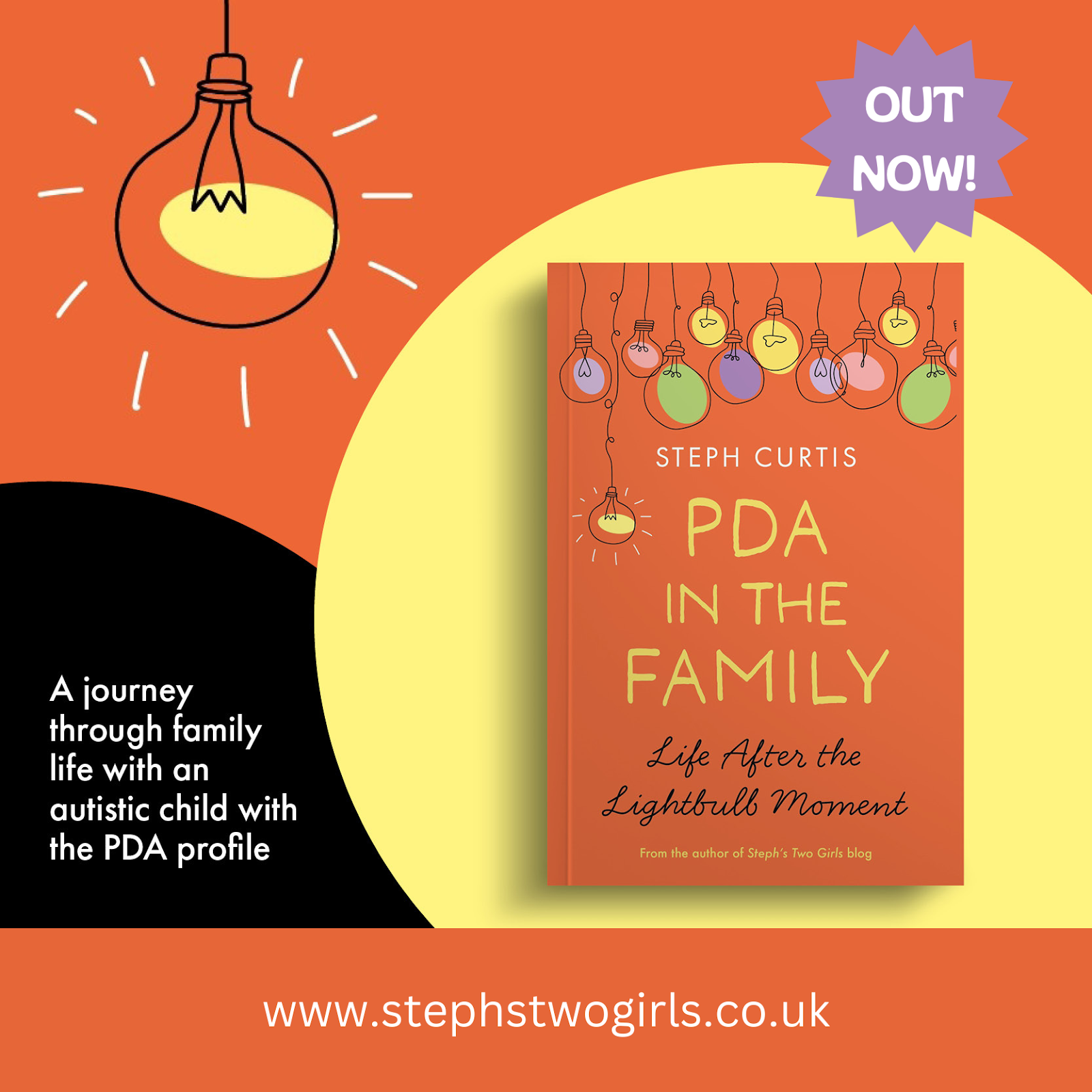 |
| (*Some of the underlined text and the pictures in this post are affiliate links; as an Amazon Associate I earn from qualifying purchases but it won't cost you any extra) |
Lisa is also well-known as a co-founder of SEND Reform England, a not-for-profit organisation that aims to support and empower parents and carers of children and young people with SEND (Special Educational Needs and Disabilities). They are lobbying at both Central and Local Government levels for a reform of the entire SEND system, asking for a collaborative approach across all political parties and for key stakeholders to make meaningful changes for all children and young people with special educational needs and disabilities.
There are eighteen chapters in this book, covering a variety of experiences and aspects of SEND life such as PDA, ADHD, post-diagnosis support (spoiler alert, not a lot), masking, eating difficulties, relationships and holidays. Practical advice is sprinkled throughout the book, as Lisa shares her real-life examples of a family navigating their children's unique needs. Lisa stresses the importance of recognising when a child is struggling silently and how such kids often “slip through the cracks" in traditional education settings. Strategies for improving communication are suggested, along with ideas for collaboration with educators, and building a supportive home environment. There’s an emphasis on the idea that these children may not be getting the support they need simply because they are 'not enough' of one thing to warrant extra resources, but 'too much' of another to be seen as neurotypical.
“On the odd occasion though, they can sometimes work together. There was one time I was upstairs painting, and I made the biggest mistake any parent in history can make. It was a rookie mistake, a schoolboy error. I ignored the silence. I know, I was stupid. Fin came up the stairs at one point though and said to me “we are making snow” and this, this was my second error.I just replied, “that’s nice.” I was half listening and didn’t consider what making snow would mean. When I got downstairs, I realised, with mounting horror, the folly of my arrogance. I had left an open box in the lounge, full of polystyrene blocks from a large delivery. The box was now empty, but my lounge was not. It was everywhere. Under the sofa, on the table, in the drawers, under the TV. We were still finding the bits months later. For those struggling to understand think of a block of polystyrene, the kind that protects a TV inside the box. Each block is made up of millions of little polystyrene balls smooshed together. Imagine someone un-smooshed them, all of them, and then tipped the result all over your whole life.*shudder*Poppy could literally make a mess out of anything though. I believe, she could honestly make a mess in a completely empty room, I am sure of it. She is usually the feral looking child coming out of school with her hair all over the place, food all over her shirt and face, and grazed knees, whereas the other kids still look as they did when their parents left them that morning. Not to mention, she often has pen all over her face as she loves to draw on herself. I think this could be another PDA thing. The teacher tells her to draw on the paper, so what does she do? Draws on herself of course. And my walls unfortunately which is the reason why we have permanent markers hidden now.”
Another quote from the book that stood out for me and that I think many will relate to was:
The thing that I love the most in the autism community is the fact it doesn’t matter if your child is non-verbal with high care needs, or verbal at a mainstream school-we all get it and know how tough it is. That is something I have found hard to accept in all honesty. At times I have worried that people would think I was a fraud talking about how tough it is to raise autistic children. I worried that the community of parents who have children with complex needs would look at me in disgust and say that I have no idea how hard it is, and I appreciate that I don’t. I don’t have to worry about things like when my child, if ever, will talk. I don’t have to worry about my child hurting me or someone else, (actually possibly with Poppy sometimes), and I don’t have to worry about teaching them how to use an AAC device, but I do have my own worries still. I worry about them being vulnerable and people taking advantage of them. I worry about how life will look for them when they are older. I worry that Poppy may never progress enough to get a job or get married. I worry that Fin’s social anxiety will hold him back throughout his life. I worry that they may always need me, and that I won’t always be here for them.One of the book's most poignant insights is that raising a SEN-Betweener can be emotionally exhausting, as these children often face frustration due to their difference being invisible. Lisa writes, “You see their potential, but no one else does, and it’s a heartbreaking place to be.” Despite these challenges, the book is filled with hopeful messages about the power of advocacy and patience. It encourages parents to become the best advocates for their children, ensuring they don’t go unnoticed or unsupported in both school and social settings.
























No comments:
Post a Comment
Comments are always very much appreciated and can really help the conversation go further...